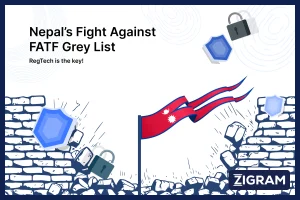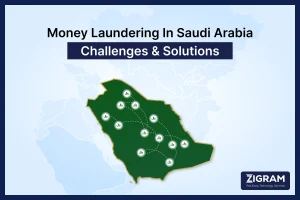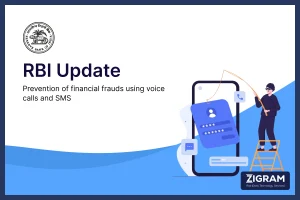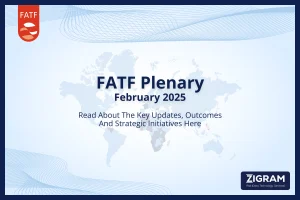Terrorist Financing (TF) remains a critical issue in India’s fight against terrorism, particularly in regions affected by insurgency and extremist activities. The Financial Action Task Force (FATF) Mutual Evaluation Report on India provides extensive insights into how the country addresses TF risks, strategies, and enforcement mechanisms.

Below is a detailed exploration of the key aspects of India’s counter-terrorist financing efforts.
Terrorist Financing Risk Assessment In India
India’s TF risk assessment adopts a unique methodology compared to traditional money laundering (ML) assessments. The country is divided into six distinct “theatres” of terrorist activity, each with its own sources and methods of financing terrorism. These regions face different challenges, with TF risks ranging from external funding, organized crime, extortion, misuse of Non-Profit Organizations (NPOs), counterfeit currency, and narcotics trafficking.
Key findings of the TF risk assessment include:
- External funding is a major source in four of the six theatres, particularly in areas like Jammu and Kashmir, which are significantly influenced by cross-border funding from Pakistan.
- Extortion serves as a critical funding method in left-wing extremist areas, including regions dominated by Maoist insurgencies.
- NPO misuse has been flagged as a growing concern, with some organizations being used to funnel terrorist funds under the guise of charitable activities.
India faces significant terrorist financing (TF) risks from groups like ISIL and Al-Qaeda, particularly in Jammu and Kashmir, with funds often moving through informal channels like hawala and cash couriers. While domestic flows dominate, cross-border channels with neighboring countries also pose a threat. The Financial Action Task Force (FATF) highlights the need for stronger financial intelligence to detect and disrupt these channels. However, delays in prosecution and a backlog of cases continue to hinder effective convictions.
Non-Profit Organizations (NPOs) in high-risk areas are also vulnerable to exploitation for terrorist financing, particularly in conflict zones like Jammu and Kashmir. While India has implemented some measures to address this risk, the current system lacks a risk-based approach, and better coordination and outreach are needed to address specific risks each NPO faces. India’s National Risk Assessment (NRA) highlights that traditional systems like hawala and cash couriers are still widely used to move terrorist funds across the country and internationally. However, emerging risks such as the use of virtual assets have also begun to surface, making it essential for Indian authorities to adapt their TF mitigation strategies.
Framework For Terrorist Financing Investigations
India’s National Investigation Agency (NIA) plays a leading role in investigating terrorist financing cases, especially those involving multi-state or cross-border elements. The NIA collaborates with the state police for localized investigations, ensuring a coordinated approach to tackling TF offenses. The Enforcement Directorate (ED) also plays a crucial role by tracing and confiscating assets related to TF under the Prevention of Money Laundering Act (PMLA).
Key features of India's TF investigation framework include:
- Asset tracing and seizures through financial investigations, which are essential for dismantling terrorist networks.
- The NIA's capacity to manage complex TF cases, such as those involving crypto wallets, hawala transactions, and international financial networks.
- State-level police forces work closely with the NIA to handle more localized terrorist financing cases, particularly in regions with a strong insurgency presence.
Legal Tools For Combating Terrorist Financing
The Unlawful Activities (Prevention) Act (UAPA) forms the backbone of India’s legislative framework against terrorist financing. Under the UAPA, financing terrorism is a criminal offense, and the Act provides the authorities with wide-ranging powers to investigate, prosecute, and freeze assets linked to terrorism.
While the UAPA offers a robust legal framework, India still faces delays in prosecuting TF offenders. These delays are often due to the complexity of gathering cross-border evidence and cooperation from international partners. Despite these challenges, the legal framework enables authorities to impose sanctions and ensure that individuals and organizations involved in TF face stringent legal consequences.
High-Profile Terrorist Financing Cases
India has dealt with several high-profile TF cases that illustrate the scale and complexity of terrorist financing networks. Notable examples include:
- The Hurriyat case in Jammu and Kashmir, where separatist leaders were accused of receiving funds from foreign sources, including Pakistan, to fuel insurgency activities..
- Maoist-related investigations, which revealed the use of extensive financial networks, including hawala systems, to fund insurgent activities in India’s left-wing extremist regions.
These cases have shown how terrorist groups exploit financial systems, including new technologies like cryptocurrency wallets, to bypass traditional banking controls. Such investigations highlight the importance of interagency coordination and the need for sophisticated financial intelligence to track the movement of terrorist funds.
Implementation Of Targeted Financial Sanctions
India has implemented targeted financial sanctions (TFS) to combat terrorist financing, as per FATF’s Recommendation 6. These sanctions are aimed at freezing assets without delay for individuals and entities associated with terrorism. While India has made strides in implementing these sanctions, challenges remain, especially in streamlining the communication process to ensure that all reporting entities are promptly informed about updates.
Reporting entities, such as financial institutions, rely on commercial sanction screening software to implement TFS. However, some sectors, particularly newly regulated ones like Designated Non-Financial Businesses and Professions (DNFBPs), lack awareness and support to comply effectively with TFS obligations. Additionally, there have been no significant matches with the UN-designated terrorist list, which could suggest either low exposure or insufficient detection.
Seizure And Confiscation Of Assets Linked To Terrorism
One of the most effective ways India combats TF is through the seizure and confiscation of assets. Since 2018, Indian authorities have seized significant amounts of assets belonging to terrorists and their affiliates. These include bank accounts, immovable property, and other financial instruments.
Key facts about India’s asset seizure efforts:
- Over €6 million in assets linked to terrorist organizations have been seized under the UAPA and UNSCR 1373 guidelines.
- The Enforcement Directorate (ED) has confiscated INR 10.62 billion (€118 million) in TF-related proceeds between 2018 and 2023.
- These confiscations disrupt the operational capabilities of terrorist organizations, reducing their ability to fund attacks and recruit members.
Addressing Prosecution Delays And Enhancing Coordination: Challenges And Recommendations
India faces significant challenges in its fight against terrorist financing (TF), particularly due to delays in prosecution and a backlog of cases. As of 2023, over 1,430 TF-related cases remain pending, impacting conviction rates and overall effectiveness. The backlog affects both money laundering (ML) and TF cases, slowing down the legal process. While India has made strides in understanding terrorist financing risks and implementing financial sanctions, further improvements are essential.
To overcome these challenges, the FATF recommends enhancing coordination between law enforcement agencies and the judiciary, as well as increasing judicial capacity to handle the high volume of cases. Improving the efficiency of financial investigations and conducting them in parallel with criminal cases can speed up prosecution timelines. Asset recovery mechanisms also need strengthening to ensure that cases move swiftly through the judicial system.
Additionally, a small percentage of Non-Profit Organizations (NPOs) remain vulnerable to terrorist financing misuse. The FATF advises India to enhance outreach and monitoring of NPOs, while improving information-sharing and providing more resources to investigators to bolster TF prosecutions and convictions. By addressing these issues and aligning more closely with FATF recommendations, India can significantly enhance its ability to disrupt and prevent terrorist financing activities.
Recommendations For Banks and Financial Institutions On Combating Terrorist Financing In India
Banks and financial institutions (FIs) in India play a crucial role in combating terrorist financing (TF). Based on the FATF Mutual Evaluation Report, several key areas require attention to enhance the efficiency and compliance of financial institutions with anti-terrorist financing frameworks.
1. Enhanced Risk Understanding
While financial institutions generally demonstrate a good understanding of TF risks at the national level, there is room for improvement in their understanding of institution-specific risks. This is particularly true for sub-sectors like cooperative banks, money changers, and securities intermediaries, which show a less nuanced understanding of their individual risks. These institutions need to tailor their assessments by considering the nature of their business, the customer base, the products and services offered, and their geographical footprint.
2. Internal Risk Assessments
Banks and financial institutions are required to conduct internal risk assessments. While large commercial banks have shown a stronger implementation of mitigating measures, smaller institutions, including MVTS providers and cooperative banks, struggle with this due to a limited understanding of risks at the institutional level. FIs must conduct more comprehensive internal risk assessments and ensure that enhanced due diligence (EDD) is applied where necessary.
3. Transaction Monitoring Systems
Banks need to strengthen their transaction monitoring systems, especially in high-risk regions such as conflict areas. For example, one bank’s proactive monitoring helped uncover a TF typology involving foreign-sponsored scholarship funds being directed toward terrorist activities. Institutions should build more sophisticated transaction alert systems to monitor for unusual activities, such as cash withdrawals or remittances from or to high-risk areas.
4. Addressing Gaps In Beneficial Ownership Identification
A key area for improvement across the financial sector is the identification of beneficial owners. Complex corporate structures or entities with layers of ownership obscure the true owners of assets. Financial institutions should enhance their Customer Due Diligence (CDD) processes and utilize available tools such as the Central KYC Register to ensure accurate identification and timely updates of beneficial ownership information.
5. Suspicious Transaction Reporting (STR)
There are inconsistencies in the level of Suspicious Transaction Reporting (STR) across different financial sectors. Some sub-sectors, including non-banking financial companies (NBFCs), rural banks, and the Department of Posts, have reported relatively low levels of STRs despite their risk profiles. It is important for all FIs to implement robust mechanisms for detecting and reporting suspicious transactions to ensure that the authorities have access to critical intelligence to counter TF.
6. Outreach And Training For Designated Non-Financial Businesses And Professions (DNFBPs)
While established FIs have implemented sanction screening software to freeze assets without delay, DNFBPs, particularly newly regulated ones, lack awareness and resources to comply with their obligations. More outreach, training, and support should be provided to DNFBPs, including real estate agents, legal professionals, and virtual asset service providers (VASPs), to help them understand and implement counter-terrorist financing measures.
7. Virtual Asset Service Providers (VASPs)
India’s rapidly growing FinTech and virtual asset markets pose new challenges in terms of compliance with anti-terrorism financing obligations. Financial institutions dealing with virtual assets must remain vigilant about the anonymity risks associated with crypto-wallets and virtual asset transfers. Implementing stringent controls, such as enhanced KYC and transaction monitoring for virtual assets, is essential to prevent misuse by terrorist organizations.
8. Recommendations For Future Actions
- Financial institutions must improve their capacity for sanction screening and freezing funds without delay, particularly smaller institutions and DNFBPs that may struggle with the complex requirements.
- There should be continuous training programs and guidelines issued by regulatory bodies to ensure FIs, particularly newly regulated sectors, are equipped to handle TF risks.
- The sector must focus on reducing reliance on manual processes and adopt advanced sanction screening technologies to better detect and prevent the flow of terrorist funds.
By enhancing their internal risk assessments, strengthening transaction monitoring systems, and ensuring full compliance with sanction screening obligations, financial institutions in India can significantly contribute to the national and global fight against terrorist financing.
- #aml
- #cft
- #India
- #FATF
- #MutualEvaluationReport2024






